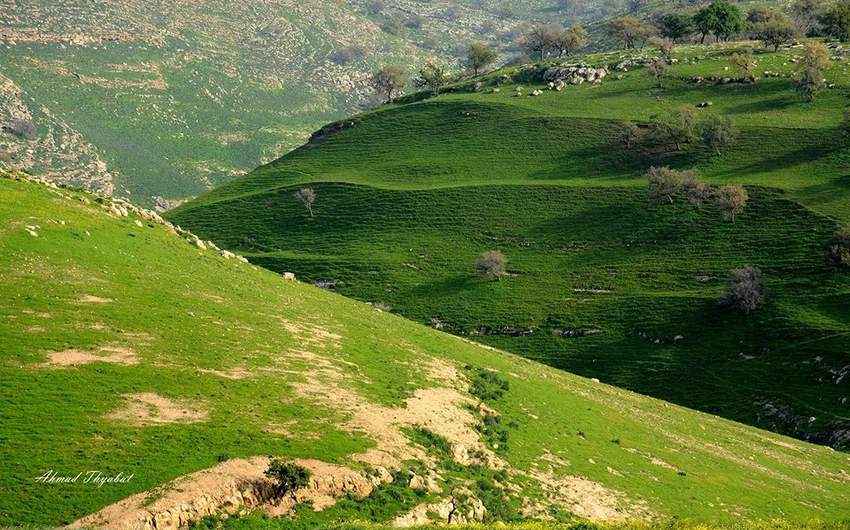“Mortaqatat” in the Collective Heritage of the Arab Mashreq
<p style=";text-align:left;direction:ltr">Arab weather - d. Ahmed Mahmoud Jabr Al-Sharida - researcher in astronomy and ambiance in the Levantine Syriac heritage.</p><p style=";text-align:left;direction:ltr"><br /> 'Borrows' is a very cold seven days. It is the last three days of February and the first four days of March, and in a "leap" year it is the last four days of February and the first three days of March. It is called "the borrowers", because the legend says that "February", which is known as the cold, borrowed from "March" four "cold" days, in order to take revenge on one of the old women who spoke ill of the month of February. The borrowings are also one of the monitoring methods adopted by the Orientals to know the weather conditions and its fluctuations.</p><h3 style=";text-align:left;direction:ltr"><br /> What is the story of this old man?</h3><p style=";text-align:left;direction:ltr"><br /> The narration from generation to generation says that February is a terrifying month for old women, and all of them are afraid to die during this month as a result of the cold, and when February begins, they make the sign of the cross over the threshold of the main door to keep the ghost of Azrael away from them. The novel adds:<br /> "Once upon a time, when the month of February had passed, one of the old women started singing and dancing and said: Here is February, and February has come, and we put a messy back on us. This means that she has escaped death, and spring has arrived and she is no longer afraid of frost."</p><p style=";text-align:left;direction:ltr"> The novel continues: "Shabab heard what the old woman said, and wanted to take revenge on her and extend his days to kill her from the cold, so he called his cousin in the month of March and said to him: "O Adar, my cousin, 4 of you and 3 of me, let the old woman sing her wheel." What does this mean that This old woman does not leave anything with her without igniting it, even the loom, to seek warmth and keep out the cold.The knitting loom was old in every home and one of the most important possessions. The only thing in those days.The important thing is that Azar responded to the request of his cousin Shabbat and loaned him the four days, and it was the raging storm of March that killed the old woman.</p><p style=";text-align:left;direction:ltr"><br /> This is the narration of "The Borrowers" that has been transmitted for hundreds of years, and that people are always afraid of the strong February storm and the perpetrators of this month, the smallest among all the months of the year.</p><p style=";text-align:left;direction:ltr"> Hence the common proverb:<br /> “To borrow, to borrow, and to be deficient, like February.”</p><p style=";text-align:left;direction:ltr"><br /> The borrowings between the Romans and the Maronites<br /> The borrowers have two calendars, the eastern calendar and the western calendar (the Julian was modified by Pope Gregory XIII and was known as the Gregorian calendar), and they are also called Maronite borrowers and Roman borrowers. The difference between them is 13 days. Because the Roman (Eastern) calendar is basically the Julian calendar, which is 13 days behind the Western calendar adopted today. The first of March according to the Romans, for example, is equivalent to March 14 on the global calendar. So, the Roman borrowings are practically the same as the previous dates, plus 13 days. That is, (March 11-12-13) and (March 14-15-16-17). And these days come cold, according to legend. The female loins are a place for “encouragement.” If the loins of one of the two sects were in winter and cold, the other group would eat ice cream and wear summer clothes, as evidence that the female loins brought little rain.</p><p style=";text-align:left;direction:ltr"></p><p style=";text-align:left;direction:ltr"> An indication that when the "Roman borrowers" begin (March 11), that is, days after the end of the "Maronite borrowers." Then the proverb says:<br /> Get rid of the "rum borrowers", you are sleeping among the vineyards. Evidence of the onset of warmth and the advent of spring. And here Islam had a role in this process, so they aligned themselves with the Romans and said their famous example:<br /> “There is no resurrection until after the stumps of the Romans.” It is a wonderful tradition that continues to this day in many regions and villages in the Levant and the Arab Mashreq</p>
ArabiaWeather Company shall not be responsible for any republication. The materials published in the “Arabia Weather Blogs” in the various media, which puts anyone who publishes these blogs in the name of the Arabia Weather or quoting the Arabia Weather under liability and legal accountability.
Arabia Weather App
Download the app to receive weather notifications and more..





